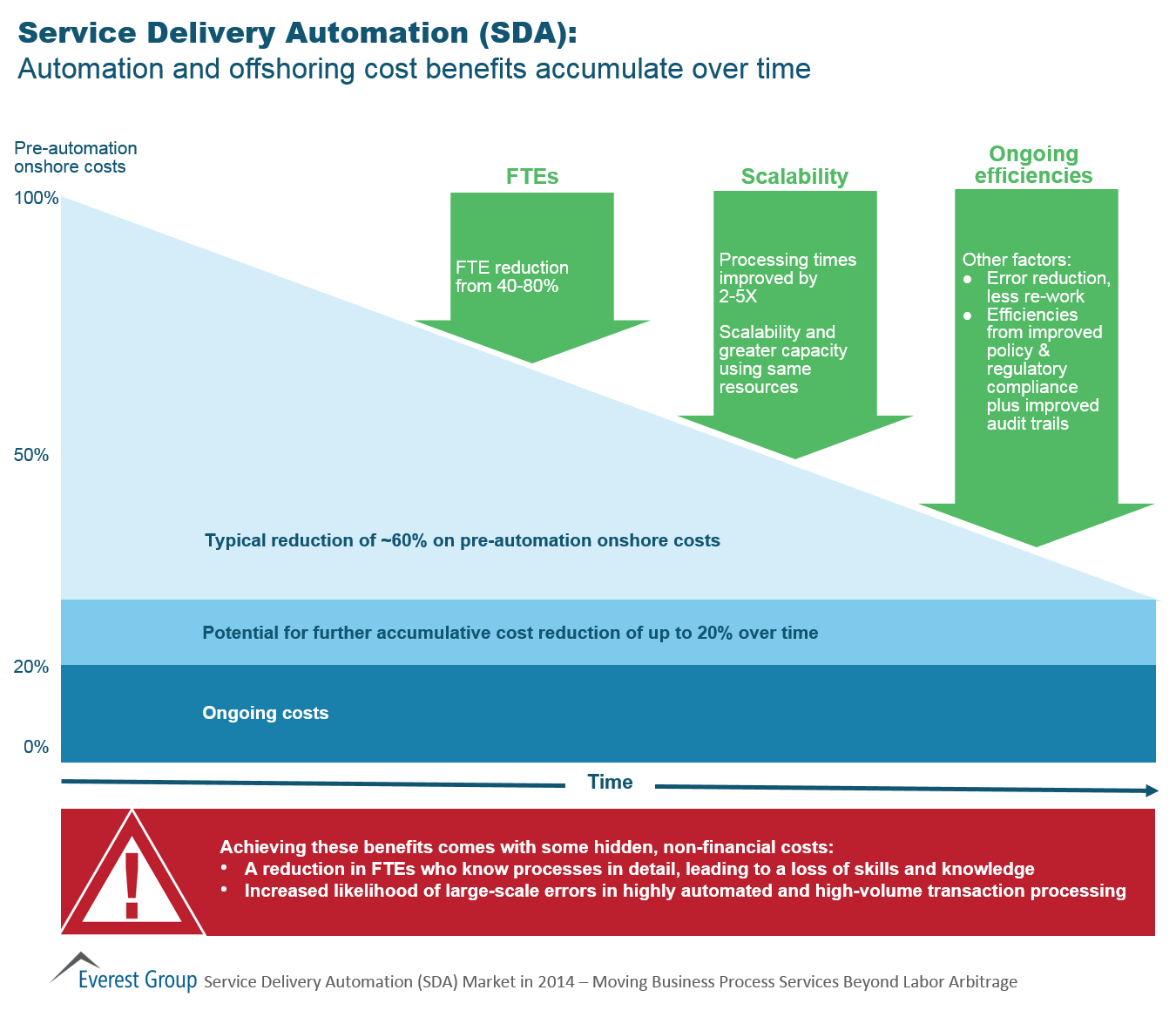October 29, 2014
Since the beginning of 2014 Everest Group has seen a real shift in large enterprise CIO organizations in their strategic intent toward cloud services. What are the implications on the traditional infrastructure outsourcing market from this strategic intent?
Timing
First, we expect that this shift will not happen overnight. As organizations work on their cloud plans, it’s clear that this is a three-to-five-year journey for migrating some or all their environment into this next-generation environment.
Runoff of work from legacy environments
Second, we expect the runoff on traditional outsourced contracts to accelerate. The runoff has been running at about 5-10 percent a year. We expect this will pick up to something close to 50 percent of the workloads to shift over to the cloud in the next three years with 30 percent of that shift happening in the next two years.
So this is a dramatic runoff of work from legacy environments into the next-generation models. This will put significant pressure on the incumbent service providers in that space.
Who will be the likely winners?
The third implication is the likely winners from this strategic shift. We think that at least for the next two years the Indian players or those with a remote infrastructure management (RIM) model will enjoy substantial benefits. Often a move to cloud or next-generation technologies can be facilitated by a move to a RIM model. So we see RIM continuing its torrid growth.
We also believe the providers with enterprise-quality cloud offerings will be players. One that particularly comes to mind is IBM’s SoftLayer, which we think is well positioned for the shift. It has its own runoff and can grab share from asset-heavy or other legacy providers as runoff occurs there.
We expect to see Microsoft and its Azure platform play an increasingly prominent role in cloud services. It will be interesting to see if AWS, Google, and Microsoft can make the shift from serving rogue IT and business users to enterprise IT. At this time we certainly believe IBM can. And it looks like Microsoft is making deliberate efforts to transition its model. It remains to be seen if AWS and Google are willing to shift their models to better accommodate enterprise IT.
Photo credit: Photo Dean



